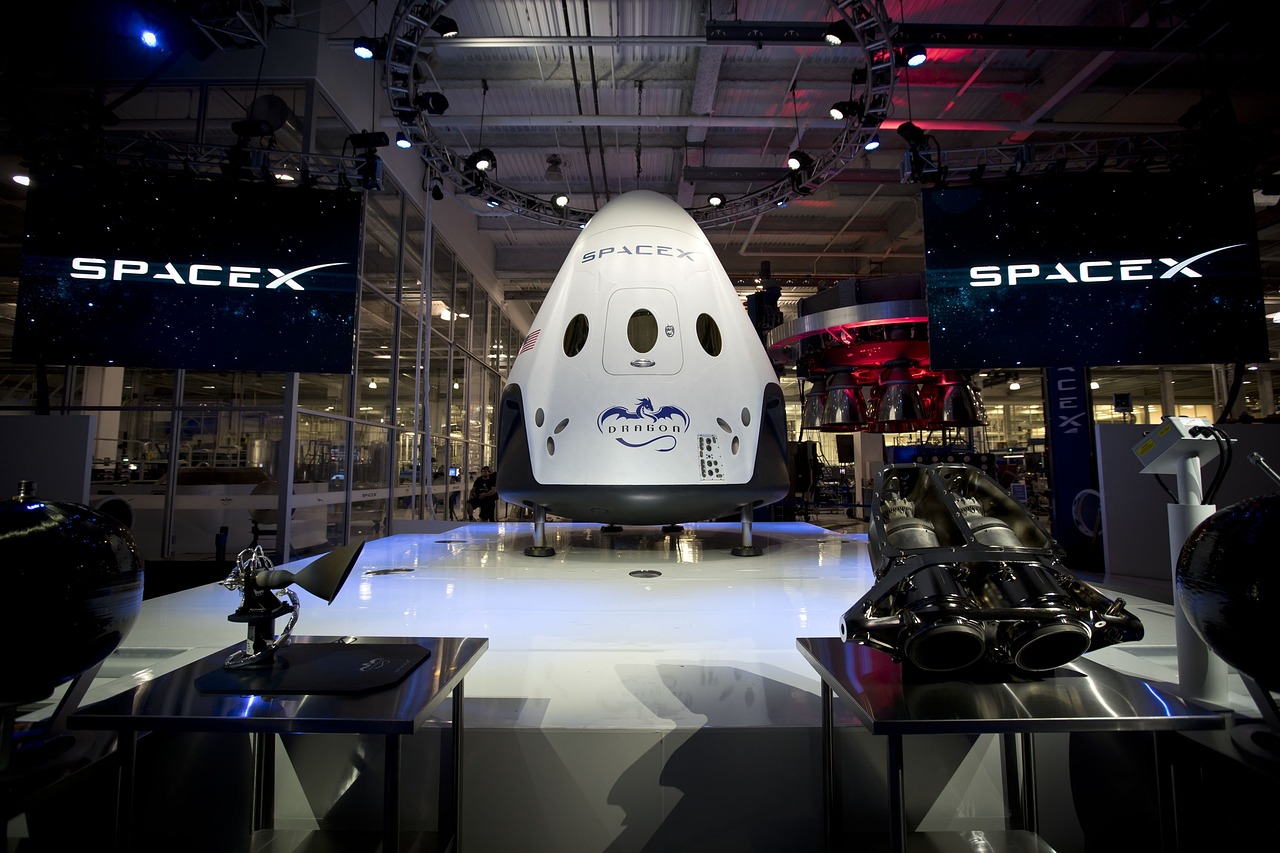In its fifth Starship test flight on Sunday, SpaceX accomplished a remarkable feat by successfully returning the rocket's towering first-stage booster to its Texas launch pad using innovative mechanical arms. This achievement underscores the company's ongoing efforts to develop a fully reusable rocket system capable of ferrying humans to the Moon and Mars.
The Super Heavy booster launched at 7:25 a.m. CT (12:25 GMT) from SpaceX’s Boca Chica, Texas facilities. After propelling the Starship's second-stage rocket toward space, the booster separated at an altitude of approximately 70 kilometers (43 miles) to initiate its return—one of the most daring segments of the test flight.
To slow its rapid descent back to the launch site, the Super Heavy booster re-ignited three of its 33 Raptor engines. Targeting the launch pad, which stands taller than the Statue of Liberty at over 400 feet, the booster descended towards the launch tower equipped with two large mechanical arms.
With engines roaring, the 233-foot (71-meter) Super Heavy booster successfully maneuvered into the launch tower's enclosing arms, securing itself with small protruding bars located under its four forward grid fins. After the successful catch attempt, CEO Elon Musk celebrated on social media, stating, "The tower has caught the rocket!" as SpaceX engineers erupted in applause during the live stream.
This innovative catch-landing method is part of SpaceX's test-to-failure development campaign, aimed at creating a fully reusable rocket that can transport more cargo into orbit, assist NASA in lunar missions, and ultimately reach Mars—the vision Musk has long championed.
Meanwhile, the Starship's second stage, which is the rocket's top half, cruised at about 17,000 miles per hour (approximately 27,000 km/h) at an altitude of 89 miles (143 kilometers). It was destined for the Indian Ocean, where it was set to demonstrate a controlled splashdown approximately 90 minutes into the flight.
During re-entry, onboard cameras captured a mesmerizing view of the superheated plasma enveloping the Starship's Earth-facing side and its two steering flaps, showcasing intense hypersonic friction. The ship is protected by 18,000 heat-shielding tiles, which were enhanced since SpaceX's last test in June, during which tile damage complicated re-entry.
This time, Starship appeared more intact as it re-ignited one of its six Raptor engines to position itself for a simulated ocean landing. The SpaceX live stream showed the rocket touching down in the ocean, before toppling onto its side, marking the conclusion of its test mission.
A subsequent camera view from a nearby vessel captured the rocket exploding into a vast fireball, eliciting cheers from SpaceX engineers. It remains uncertain whether the explosion was a controlled detonation or the result of a fuel leak. Musk confirmed that the ship landed "precisely on target!"
Starship was first unveiled by Musk in 2016, and it has experienced several explosions during various testing phases. However, it completed its first full flight in June, marking a pivotal moment in its development.
In a significant development, the U.S. Federal Aviation Administration approved SpaceX's launch license for the fifth test flight, easing previous tensions between the company and its regulator regarding the pace of launch approvals and related fines for its Falcon 9 rocket operations.



 FDA Says No Black Box Warning Planned for COVID-19 Vaccines Despite Safety Debate
FDA Says No Black Box Warning Planned for COVID-19 Vaccines Despite Safety Debate  United Airlines Flight to Tokyo Returns to Dulles After Engine Failure During Takeoff
United Airlines Flight to Tokyo Returns to Dulles After Engine Failure During Takeoff  Coca-Cola’s Proposed Sale of Costa Coffee Faces Uncertainty Amid Price Dispute
Coca-Cola’s Proposed Sale of Costa Coffee Faces Uncertainty Amid Price Dispute  Trump Sues BBC for Defamation Over Edited Capitol Riot Speech Clip
Trump Sues BBC for Defamation Over Edited Capitol Riot Speech Clip  SpaceX Begins IPO Preparations as Wall Street Banks Line Up for Advisory Roles
SpaceX Begins IPO Preparations as Wall Street Banks Line Up for Advisory Roles  Intel’s Testing of China-Linked Chipmaking Tools Raises U.S. National Security Concerns
Intel’s Testing of China-Linked Chipmaking Tools Raises U.S. National Security Concerns  Korea Zinc to Build $7.4 Billion Critical Minerals Refinery in Tennessee With U.S. Government Backing
Korea Zinc to Build $7.4 Billion Critical Minerals Refinery in Tennessee With U.S. Government Backing  Ford Takes $19.5 Billion Charge as EV Strategy Shifts Toward Hybrids
Ford Takes $19.5 Billion Charge as EV Strategy Shifts Toward Hybrids  Coca-Cola’s Costa Coffee Sale Faces Uncertainty as Talks With TDR Capital Hit Snag
Coca-Cola’s Costa Coffee Sale Faces Uncertainty as Talks With TDR Capital Hit Snag  United Airlines Tokyo-Bound Flight Returns to Dulles After Engine Failure
United Airlines Tokyo-Bound Flight Returns to Dulles After Engine Failure  Strategy Retains Nasdaq 100 Spot Amid Growing Scrutiny of Bitcoin Treasury Model
Strategy Retains Nasdaq 100 Spot Amid Growing Scrutiny of Bitcoin Treasury Model  California Jury Awards $40 Million in Johnson & Johnson Talc Cancer Lawsuit
California Jury Awards $40 Million in Johnson & Johnson Talc Cancer Lawsuit  Mizuho Raises Broadcom Price Target to $450 on Surging AI Chip Demand
Mizuho Raises Broadcom Price Target to $450 on Surging AI Chip Demand  Azul Airlines Wins Court Approval for $2 Billion Debt Restructuring and New Capital Raise
Azul Airlines Wins Court Approval for $2 Billion Debt Restructuring and New Capital Raise  Nvidia Weighs Expanding H200 AI Chip Production as China Demand Surges
Nvidia Weighs Expanding H200 AI Chip Production as China Demand Surges  Shell M&A Chief Exits After BP Takeover Proposal Rejected
Shell M&A Chief Exits After BP Takeover Proposal Rejected  Trello Outage Disrupts Users as Access Issues Hit Atlassian’s Work Management Platform
Trello Outage Disrupts Users as Access Issues Hit Atlassian’s Work Management Platform 































